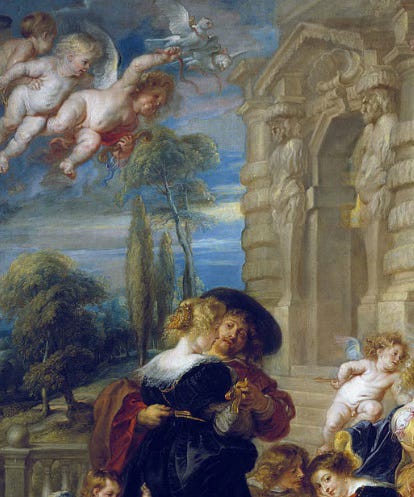On June 17, 1994, I was in bed with the flu, gripping a TV remote, resigned to passively watching a live feed of the LAPD chasing O.J.Simpson on a California freeway. When the entire caravan pulled into Simpson’s Brentwood driveway, several news helicopters, one of which I had followed thus far, gathered over the confrontation below. Though my symptoms had made raising a cup of tea a challenge, I found that with a single touch of a button I was able to jump from one news helicopter camera to the next. If a tree suddenly blocked my view of the infamous Ford Bronco, I’d just switch helicopters. The scene in the driveway below remained compelling, but I found my overhead copter hopping truly exhilarating.
Thirty years later drone cameras provide a hands-on version of this experience, accessible to anyone anywhere, which most of us find deeply problematic. But the idea of the drone, the drone as a metaphor for rising above the fray, of pulling back in order to gain a wider perspective, the drone as a state of mind, may be just what we need when group assessment on any issue bursts instantly to extremes. Objectivity is now more crucial and necessary than it ever was.
As an artist, and especially as an art critic, I’m finding an open, disinterested overview far more appealing than following trends instigated by art market power players. Hovering, for instance helped me assess “The Painted Protest”, an essay by Dean Kissick published in Harper’s last month that has been met with passionate support and equally passionate opposition, neither of which added any clarity to the implied issue. I’m not even clear as to what Kissick was trying to say.
My initial reaction to both positive and negative responses to the essay was an appreciation for a controversy large enough to displace our pointless chatter about Cattelan’s goddamned banana. As messy as Kissick’s argument was, at least it flirted with relevance.
Kissick’s main gripe seemed to be that recent art festivals and museum biennials he attended had lavished exclusive attention on a sort of political art that offered little visual evidence of its political content, relying almost entirely on textual explanation or in some cases the ethnic or social identity of the artist. I thought that was a valid critique of the one narrow aspect of the work he discussed. But Kissick’s follow-up advocacy, a cry for more technology in art, more emphasis on a contemporary rather than a historical perspective, and a call for more “deranged” art—whatever that is—struck me as more of the same hopeless search for consensus that motivated the curators who instigated the exhibitions Kissick was complaining about.
Therein lies the problem we all face in the art world. Our unwillingness to accept modernism for what it is. An utterly decentralized anarchic cultural endeavor best appreciated not by seeking trends and patterns suggested by phantom post-modern canards, but by remaining open to intuitive and random discovery. The curators Kissick derides for emphasizing the wrong subject deserve instead criticism for overstepping their role as informed observers. By selecting and generously funding artists to create work for an exhibition that fits a popular theory of relevant art, they are actually collaborating with artists to create the illusion of a consensus, a trend, a motivating cultural impetus that only looks significant because its been promoted at great expense at an international art festival.
The issues raised by artists, or more often tangentially referenced by their curators at the festivals Kissick cites are genuinely significant to humanity. But individuals whose selfless devotion to journalism, or to NGOs bringing aid and support to populations under siege from political, natural or ideological forces, are the people making a difference. Artists participating in a festival held in an expensive European city, a city made temporarily more expensive during the festival, provides no relief to anyone but hoteliers.
Modern art’s early written history was heavily reliant on the notion of progress, as if the founding of the United Nations and the rise of Abstract Expressionism were of equal significance to the human race. The myth of progress in art fell apart when the sheer number of artists working overwhelmed any attempt at identifying a shared purpose. Pluralism did not replace classic modernism. Pluralism was, and remains a manifestation of modernism’s inherent diversity. The variety of visual art expression in 1920 was already pluralist. What distinguishes 1920s pluralism from today’s is its critical manageability.
What we need is more objectivity. More hovering. More disinterested observation. Artists do this out of necessity. They have no real power in the art world. Curators ought to follow their lead. Not jump ahead as if they are the true trailblazers. Look to the artists in Cleveland, or Mexico City, or Kinshasa, or Ramallah. Not just the artists from Cleveland, Mexico City, Kinshasa and Ramallah who through family advantage show up in Dubai, London and New York. Honor the decentralization that modernism brought to the visual arts more than a century ago. And stop looking for trends. From a hundred feet above, trends lose their mirage.



Good one, Peter!